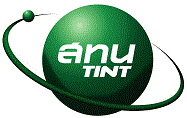PS13: อันตรกิริยาของแก้วตะกั่วบอเรตที่พลังงานรังสีแกมมา 662 กิโลอิเล็กตรอนโวลต์
* จักรพงษ์ แก้วขาว 1 , วีระพงศ์ จิ๋วประดิษฐ์กุล 2 และ พิเชษฐ ลิ้มสุวรรณ 2
1 หน่วยวิจัยแก้วและวัสดุศาสตร์ คณะวิทยาศาสตร์และเทคโนโลยี มหาวิทยาลัยราชภัฏนครปฐมอำเภอเมือง จังหวัดนครปฐม 73000 โทรศัพท์ : 0 34261 065, โทรสาร: 0 34261 065, อีเมล์: mink110@hotmail.com
2 ภาควิชาฟิสิกส์ คณะวิทยาศาสตร์ มหาวิทยาลัยเทคโนโลยีพระจอมเกล้าธนบุรี แขวงบางมด เขตทุ่งครุ กรุงเทพ , 10140
โทรศัพท์ : 0 2470 8000, โทรสาร: 0 2470 8000, อีเมล์: weerapong.che@kmutt.ac.th
บทคัดย่อ
งานวิจัยนี้ได้มีการศึกษาค่าสัมประสิทธิ์การลดทอนเชิงมวล ค่าภาคตัดขวางรวม และค่าเลขอะตอมยังผลของระบบแก้ว xPbO:(100-x)B 2O 3 เมื่อ 30 ? x ? 70 (% โดยน้ำหนัก) ที่พลังงาน 662 กิโลอิเล็กตรอนโวลต์บนพื้นฐานของกฎการผสม ผลที่ได้พบว่าค่าสัมประสิทธิ์การลดทอนเชิงมวลเพิ่มขึ้น เมื่อเพิ่มปริมาณตะกั่วอันเนื่องมาจากโอกาสในการเกิดการดูดกลืน โฟโตอิเล็กตริกที่สูงขึ้น อย่างไรก็ตามการกระเจิงคอมป์ตันเป็นอันตรกิริยาหลัก ของค่าสัมประสิทธิ์การลดทอนเชิงมวลรวม ในแก้วตัวอย่าง โดยผลการทดลองสอดคล้องกับค่าทางทฤษฎีที่คำนวณจากโปรแกรม WinXCom สำหรับสมบัติการป้องกัน รังสีของแก้วตัวอย่างมีค่าดีกว่าคอนกรีตกำบังรังสีแบบเดิม และดีกว่ากระจกหน้าต่างตามท้องตลาด ผลการทดลองนี้ชี้ให้เห็น ถึงประโยชน์ของแก้วในการใช้เป็นวัสดุกำบังรังสี
คำสำคัญ : สัมประสิทธิ์การลดทอนเชิงมวล , เลขอะตอมยังผล, วัสดุกำบังรังสี, แก้ว
PS13: Interaction of Lead Borate Glass at 662 keV Gamma Rays
*J. Kaewkhao 1 , W. Chewpraditkul 2 and P. Limsuwan 2
1 Glass and Materials Science Research Unit (GMSRU), Faculty of Science and Technology,
Nakhon Pathom Rajabhat University, Nakorn Pathom, Thailand, 73000
Phone: 0 34261 065, Fax: 0 34261 065, E-Mail: mink110@hotmail.com
2 Department of Physics, Faculty of Science King Mongkuts University of Technology Thonburi, Bangkok, Thailand, 10140 Phone: 0 2470 8000, Fax: 0 2470 8000, E-Mail: weerapong.che@kmutt.ac.th
Abstract
The mass attenuation coefficient, total interaction cross-section and effective atomic number of xPbO:(100-x)B 2O 3 where 30 ? x ? 70 (% weight) glass system have been investigated at 662 keV on the basis of the mixture rule. The results are in good agreement with the theoretical values, calculated by WinXCom. Mass attenuation coefficients increase with PbO content, due to higher probability of photoelectric absorption in glass. However, Compton scattering gives dominant contribution to the total mass attenuation coefficients for the glass samples studied. The shielding properties of the glass samples are also better than ordinary shielding concretes and commercial window glass which can be used with advantage as transparent in visible region. These results indicate the potential of glasses as radiation shielding materials.
Keywords: Mass attenuation coefficients, Effective atomic numbers, Radiation shielding Materials, Glasses |


